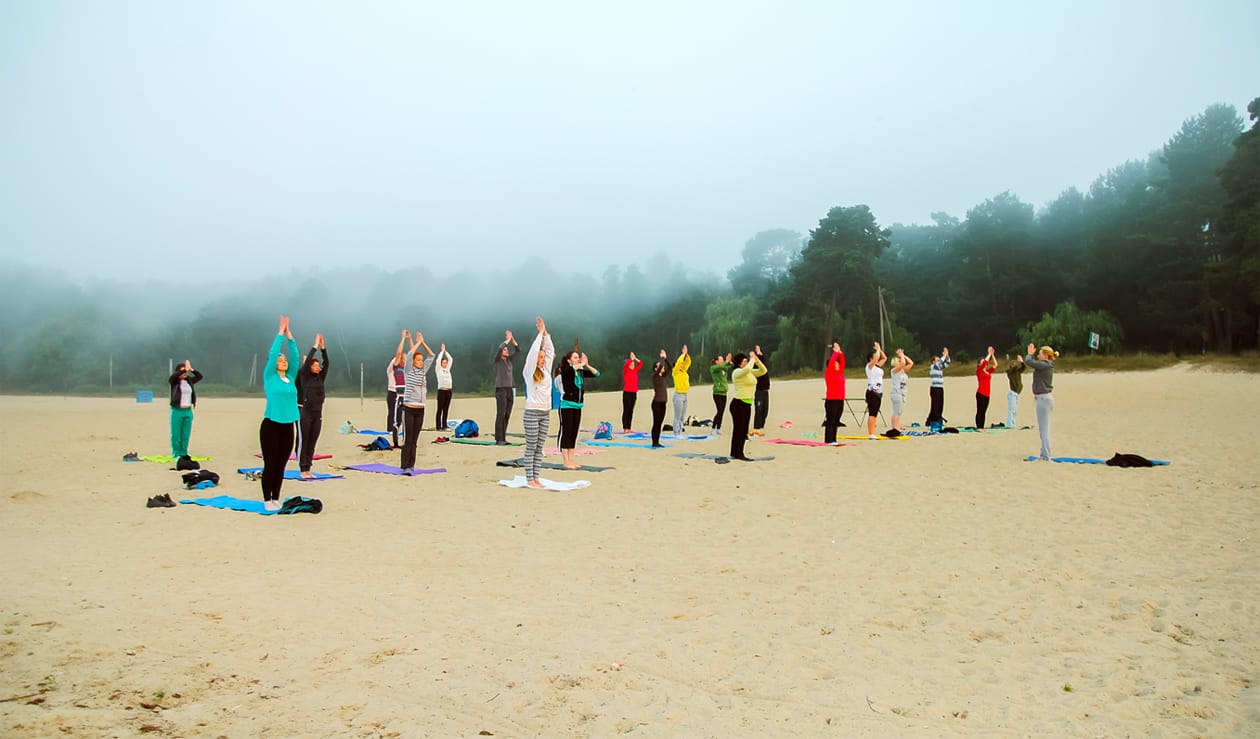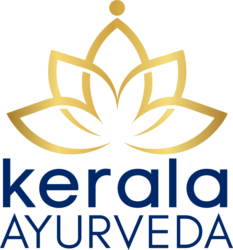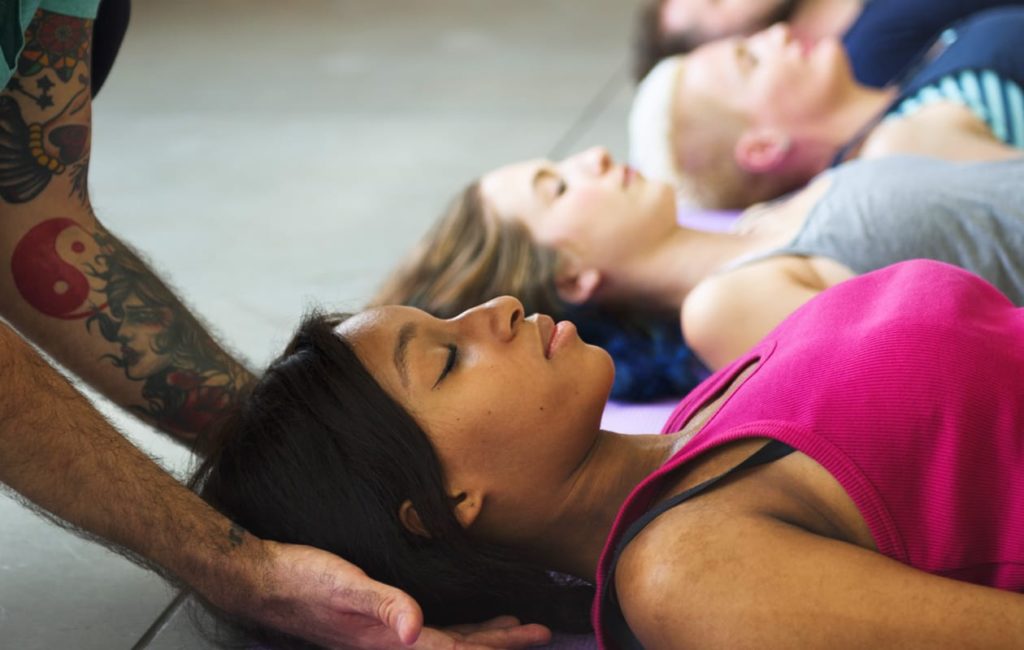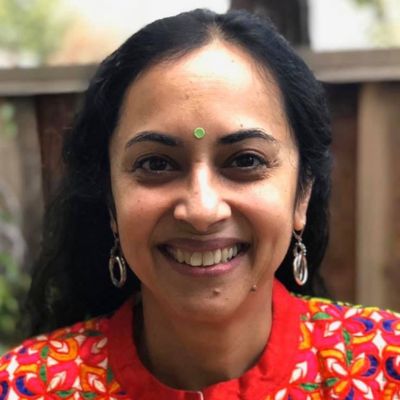Ayurveda and Yoga: sister sciences that work best together
Ayurveda or the “Science of Life” is a 5,000 year old medical practice from India, a Complementary and Alternative Practice1 recognized by WHO2 in the U.S. It is a traditional holistic science of mind-body-spirit wellness which is preventative in nature and it helps in managing ailments through addressing the root cause of disorders. Ayurveda uses various tools in disease management such as herbs, therapies like Panchakarma bodywork, and Yoga. Yoga has become a household name in the West to enhance fitness, reduce stress and cultivate inner peace. Traditionally, it is a form of Sadhana, or spiritual practice for the purpose of self-realization. Yoga is not perceived in the West to address ailments per se, and this is largely due to the fact it is practiced separately from Ayurveda. Yoga in a therapeutic context is essentially Ayurvedic in nature.
In the words of Dr. David Frawley, esteemed scholar of Ayurveda, Yoga and Vedanta and director of the American Institute of Vedic Studies:
Using Ayurveda along with Yoga helps us gain complete harmony and balance in body and mind so that we can discover our true Self that is one with all. All Yoga teachers should learn the fundamentals of Ayurveda and all Yoga students should seek Ayurvedic guidance to enhance their Yoga practice.
Ayurveda and Yoga are sister sciences that have evolved from the Vedas, part of the same ancient healing tradition with common goals of preserving our health and raising consciousness. If you’re a Yoga student, teacher or practitioner, you may be wondering how Ayurvedic study can strengthen your Yoga offering.
Ayurveda for Yoga instructors and therapists
The study of Ayurveda for Yoga can enhance your practice, make it more comprehensive and attractive for your clients. It can also enrich your own personal journey of holistic and spiritual healing.

A framework for understanding clients
Body constitution and imbalances
Ayurveda involves the study of Doshas or energy principles formed from the combination of Panchamahabhutas (the five great elements).
Vata (ether and air) is the principle of movement
Pitta (fire and water) is the principle of transformation
Kapha (water and earth) is the principle of cohesion
Every client is unique and their Prakriti, or body constitution is the combination of Doshas they are born with and remains unchanged; this governs their structure, function, affinities and tendencies. Vikriti or imbalances occur when Doshas go out of balance. A knowledge of Doshas gives you an idea of what kind of routine, diet, Yoga, exercise and other practices support an individual’s health.
Orientations of the mind
There are three orientations of the mind, or Gunas:
Sattva (balanced, clear)
Rajas (ambitious and restless)
Tamas (dull and lethargic)
Yoga and Ayurveda both emphasize cultivating Sattva to meditate, improve mental acuity and manage emotional and psychological disorders. Ayurvedic Yoga uses the knowledge of Prakriti, Vikriti and Gunas as a wonderful framework to understand a client’s unique requirements, challenges so you can better assist them. In the case of chronic ailments in particular, knowing how to deal with imbalances is important.
For example, a Vata-dominant individual might overdo exercise because of restlessness and present with osteoarthritis. Meanwhile, a Pitta-dominant individual may go overboard on a competitive sport and develop plantar fasciitis. The study of Ayurveda helps in understanding their tendencies to offer more tailored Yoga suggestions for healing.
Applications of the Tridoshas for Ayurvedic Yoga practice
Here is an outline of Ayurvedic Yoga to suit different Doshas.
Vata DOSHA
Body type: quick, spacey, fickle, creative, enjoy movement
Imbalances: dryness, anxiety, constipation, lumbago, insomnia
Yoga recommendations:
- Regular, slow, warming, grounding, restorative, at less than capacity
- Few poses held for longer duration (though they may crave a faster pace)
- Tree Pose, Mountain pose, floor sequences, seated forward bends, gentle backward bends, twisting to kindle Agni and longer Savasana
Pranayama recommendations:
Abdominal breathing, full yogic breathing, alternate nostril breathing
Benefits: focus, calming the CNS, strengthening the lower spinal region, pelvic floor and colon which are the seat of Vata, stimulating the parasympathetic nervous system
Pitta DOSHA
Body type: driven, ambitious, courageous, perfectionists
Imbalances: anger, irritability, inflammation, hyperacidity
Yoga asana recommendations:
- Slow gentle movements with spinal twists (with care during backbends or spinal compression poses) and forward bends Meditative, slow sun salutations
- May be drawn to intense practices like Ashtanga, Vinyasa or Hot Yoga, but need to be less competitive
- Preferably done before sunrise or in the evening
Pranayama recommendations:
Sheetali, Brahmari, longer exhalation than inhalation and Chandra Bhedana followed by alternate nostril breathing
Benefits: cooling, relaxing, calming
Kapha dosha
Body type: Relaxed, laid back, steady, loving, and nurturing.
Imbalances: Stagnation, congestion, obesity, lethargy, depression.
Yoga asana recommendations
- Energetic practice though they may prefer a gentle Yin Class.
- Switching around the routine
- Warmer and faster class, stimulating respiration and inducing sweat like sun salutations, standing and inverted poses
Pranayama recommendations:
Kapalabhati, Bhastrika and Surya Bhedana followed by Nadi Shodhana – alternate nostril breathing
Benefits: stimulates Agni (digestive and metabolic fire). Kapha can stagnate and accumulate and needs awakening and shaking up
Customizing Yoga Classes
Yoga can be adapted for clients in one-on-one sessions or in themed classes based on the framework of Prakriti, Vikriti and Gunas. In group classes, you can customize suggestions based on the season, offer suggestions and prompts in consideration of constitutional differences, and discuss contraindications for imbalances. While observing and assisting clients, you can incorporate these guidelines more specifically and make modifications around the room.
As you begin to apply Ayurveda to Yoga practice, you’ll begin to ask questions such as: does a Pranayama stoke the Agni? Does an Asana energize, settle or strengthen the body. Is it heating or cooling? Can it be done sitting, standing; does it need to be held longer?
Every Asana cannot be practiced in the same way by each client because of their unique needs. For example, sun salutations may need to be done in a slow and meditative fashion by to pacify Vata. Meanwhile, those need pacification of Kapha will benefit from a fast, almost aerobic way flow. Pawanmuktasana could involve rotating ankles while holding the pose for someone who has a lot of Rajas (restlessness).

Aligning your practice with natural rhythms
During different seasons, times of the day and stages of life, various Doshas dominate. Changing your Yoga practice to align with nature, with daily circadian rhythms, seasonal rhythms and for different age groups is a powerful way to restore health.
Barring an overriding imbalance, Vata suggestions can be used in Vata season which is fall and early winter. Avoid stimulating Yoga like backbends and inversions after 10pm which is the Pitta time, but they’re great during spring, a predominantly Kapha season!
Kapha dominates during childhood, Pitta during youth and Vata in old age. Many people today are living to older ages, with degenerative disorders resulting from stress and inflammation on the rise. Ayurvedic Yoga can improve the quality of longevity with strengthening, reducing stress, improving immunity and ensuring clients stay supple, flexible and injury free.
Therapeutic benefits and disease management
Ayurveda explores the benefits of different types of breathwork, Asana and sequences in relationship to diseases.
The knowledge of Ayurveda helps in addressing a wide range of illnesses and concerns that clients come with and Ayurvedic Yoga suggestions are so much more pertinent coming from a qualified Ayurvedic consultant.
For example:
- If a client has hyperacidity or Crohn’s disease, Ayurvedic Yoga would involve avoiding hot yoga, midday yoga or heating asanas like sun salutations. Besides a customized regimen, you could advise lowering stress, avoiding late nights, sour and spicy food and suggest simple herbs and therapies.
- For an elderly woman who has constipation, anxiety and lumbago, an assessment would likely reveal Vata imbalance (in the Vata phase of life). Guidelines for her would involve a Vata-pacifying regimen.
Offer Ayurvedic education and consultations
Yogis tend to be interested in holistic healing and self help. Topics like nutrition, daily rituals and lifestyle suggestions based on Ayurvedic guidelines are great introductions. You can enhance your existing classes with Ayurvedic elements, or design new specialty workshops. With a level I Ayurvedic certification, you could expand your offerings to include assessments, and consultations and comprehensive guidelines on health and wellness. With the addition of Ayurveda into your offerings, you’re destined to grow your clientele, build a robust practice and carve out a specialty niche!

Enhance your own wellbeing and deepen your bond with the Vedas
The study of Ayurveda can help you transform your own personal, emotional, physical and spiritual wellbeing. You can’t give from an empty cup, and self-care is where any healer’s journey begins. By deepening your exploration of the Vedas, you’ll discover new avenues for self development you couldn’t have imagined previously. Ayurveda expands the dimension of Yoga, allowing Yoga to truly shine in its full potential – as will you!
What does Ayurvedic certification involve?
Yoga already uses Ayurvedic principles of Chakras and Nadis in studying anatomy and physiology. It focuses on elevating Prana or life force, kindling and balancing Agni (digestive and metabolic fire) and regulating Nadis and Srotas (or channels) with the use of Asanas, Mantras, Bandhas and the eight limbs of Yoga including meditation.
Most students of Yoga are introduced to additional Ayurvedic concepts such as Gunas and Doshas at the certification level for teacher training, though they aren’t always confident enough to apply Ayurveda to their Yoga practice. An Ayurvedic certification will help you deepen your knowledge, feel empowered to combine the sister sciences and discover a new level of personal and professional potential. You’ll learn how to help yourself as well as your clients nourish the mind & body, both on and off the mat.
A level I certification enables an Ayurvedic Counselor to:
- Learn the fundamental principles of Ayurveda
- Take the history of clients
- Assess individual mind-body constitution (Prakriti)
- Suggest dietary changes
- Recommend daily and seasonal routines
- Work withthe elements and Doshas to bring general balance
- Use basic herbs, meditation, Yoga and Pranayama in the context of different Doshas
- Offer cooking classes, simple nutrition tips, talk or write about Ayurvedic concepts
Level II Ayurvedic Practitioners have the advanced skill of disease management for more advanced conditions, tapping into diverse assessment tools and an extensive knowledge of herbs, therapies and formulations.
Ayurveda and Yoga are part of the same ancient healing system to balance energy, understand the nature of imbalances, cravings, aversions and gain an awareness of the self. As Dr. David Frawley explains, “Ayurvedic thought extends the principles of Yoga philosophy into how the body and mind work in order to bring them to optimal function and harmony.” Ayurvedic training is a beautiful way to understand why Yoga is practiced in a particular way, the intention behind postures and techniques, sequences and breath work for different physical and mental needs, aligning with natural rhythms, avoiding injury, enhancing health, encouraging an individualized and holistic practice, improving one’s nutrition, lifestyle and overall quality of life.
Wishing you well in your Yoga practice and journey~
Om Sahanavavatu Sahanaubhunaktu Saha Veeryam karavavahai
Tejaswi navadhitamastu maa vidvisavahai Om Shanti Shanti Shantihi
Om, may we all be protected together, may we be nourished together, may we work together with great energy, may our intellect be sharpened and there be no hostility amongst us, may there be peace in all dimensions.





